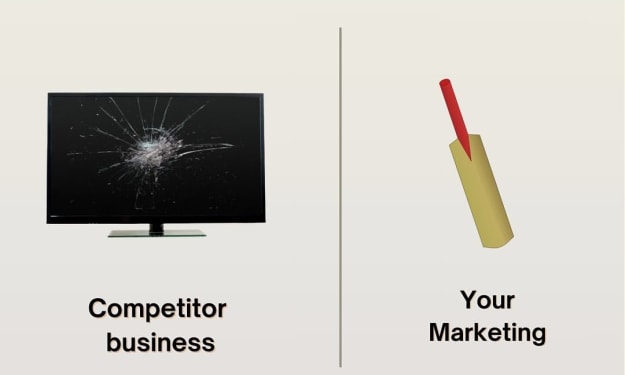Making Your Workplace Safer with Near Miss Reporting
How to Promote Near Miss Reporting in the Workplace

Making Your Workplace Safer with Near Miss Reporting
How to Promote Near Miss Reporting in the Workplace
A near miss is an event that has the potential to cause harm or injury, but doesn't result in actual harm because of luck, chance, or preventative measures. In the workplace, it's important to identify and report near misses to prevent future accidents and injuries. Promoting near miss reporting can be a challenge, but with the right strategies and techniques, it can be achieved.
Educate workers on the importance of near miss reporting
The first step in promoting near miss reporting is to educate workers on why it is important. Near miss reporting helps identify and mitigate potential hazards in the workplace, preventing accidents and injuries in the future. Emphasize the role each employee plays in creating a safe work environment and the impact that near miss reporting can have.
Create a culture of safety
Creating a culture of safety involves making safety a priority in all aspects of the workplace. Encourage workers to take an active role in promoting safety and to report any potential hazards, near misses, or accidents. This can be done through safety meetings, safety training, and the use of safety slogans and posters.
Implement an easy-to-use reporting system
To promote near miss reporting, it's important to make the process as easy and straightforward as possible. This can be done by implementing an online reporting system or a paper-based reporting form that workers can access and use easily. Make sure the system is accessible and clearly explains how to report a near miss.
Offer incentives for near miss reporting
Another way to encourage near miss reporting is to offer incentives for workers who report near misses. This can include recognition in company newsletters, gift cards, or extra time off. The incentives should be tied to the importance of near miss reporting and the impact it has on creating a safe work environment.
Encourage anonymous reporting
Some workers may be hesitant to report near misses due to fear of retaliation or embarrassment. To encourage reporting, it's important to offer the option of anonymous reporting. This can be done through an anonymous online reporting system or by allowing workers to leave anonymous notes in designated locations.
Follow up on near miss reports
Following up on near miss reports is an important step in promoting near miss reporting. Acknowledge the report and thank the employee for bringing it to your attention. Investigate the near miss and determine what steps need to be taken to prevent it from happening again in the future. Communicate the results of the investigation and any steps taken to prevent future near misses to all workers.
Continuously evaluate and improve the process
Finally, it's important to continuously evaluate and improve the near miss reporting process. This can be done by conducting regular safety audits and reviewing near miss reports to identify areas for improvement. Encourage workers to provide feedback on the process and make changes as needed to make near miss reporting as effective and efficient as possible.
In conclusion, promoting near miss reporting in the workplace is essential for creating a safe work environment and preventing accidents and injuries. By educating workers, creating a culture of safety, implementing an easy-to-use reporting system, offering incentives, encouraging anonymous reporting, following up on near miss reports, and continuously evaluating and improving the process, near miss reporting can be effectively promoted.
Train workers on how to identify near misses
In order for near miss reporting to be effective, workers need to know what constitutes a near miss. Provide training on how to identify near misses, including recognizing potential hazards and the signs of an incident that could have resulted in harm. Emphasize the importance of reporting all near misses, no matter how small or insignificant they may seem.
Promote a non-punitive approach
It's important to create an environment in which workers feel comfortable reporting near misses without fear of punishment. Promote a non-punitive approach to near miss reporting, where the focus is on identifying hazards and preventing accidents, not blaming workers for incidents that didn't result in harm.
Encourage open communication
Open communication is essential for promoting near miss reporting. Encourage workers to speak up and share their observations and concerns about potential hazards. Create a culture in which workers feel comfortable sharing information and where their opinions are valued.
Provide resources for improvement
Provide resources and support to help workers improve their work practices and prevent near misses. This can include training on best practices, access to safety equipment, and tools and resources to help workers identify and mitigate potential hazards.
Lead by example
Leaders play a crucial role in promoting near miss reporting. Lead by example and make it a priority to report near misses yourself. Encourage managers and supervisors to do the same and recognize their efforts in promoting near miss reporting.
Regularly review and act on near miss reports
Regularly review near miss reports and act on the information they provide. Use near miss reports to identify patterns and trends and to implement changes to prevent future incidents. Ensure that workers are aware of the actions taken as a result of near miss reports and the impact it has on creating a safer work environment.
In summary, promoting near miss reporting requires a multi-faceted approach that includes educating workers, creating a culture of safety, implementing an effective reporting system, offering incentives, encouraging anonymous reporting, following up on reports, continuously evaluating and improving the process, training workers on how to identify near misses, promoting a non-punitive approach, encouraging open communication, providing resources for improvement, leading by example, and regularly reviewing and acting on near miss reports. By taking these steps, organizations can create a culture in which near miss reporting is encouraged and valued, leading to a safer and more efficient workplace.
"Promoting Near Miss Reporting in the Workplace: A Comprehensive Guide with Key Strategies and Tips"
"The Importance of Encouraging Near Miss Reporting in the Workplace"
"Creating a Culture of Safety Through Near Miss Reporting"
"Maximizing Workplace Safety with Effective Near Miss Reporting"
"Preventing Accidents through Promoting Near Miss Reporting"
"Unlocking the Potential of Near Miss Reporting in the Workplace"
"Making Your Workplace Safer with Near Miss Reporting"
"Ensuring Workplace Safety through Encouraging Near Miss Reporting"
"The Power of Near Miss Reporting in Improving Workplace Safety"
"The Role of Workers and Leaders in Promoting Near Miss Reporting"
"Empowering Workers to Improve Workplace Safety through Near Miss Reporting".
Near miss reporting, workplace safety, hazard identification, incident prevention, non-punitive approach, open communication, improvement resources, employee training, leadership, report review and action, creating a culture of safety.
About the Creator
HSE Insider
Join the HSE community and take your safety knowledge to the next level with “HSE Insider”
Follow us on social media and be sure to share with your network. Together, we can make the world a safer place.
Support HSE Insider today!
Enjoyed the story? Support the Creator.
Subscribe for free to receive all their stories in your feed. You could also pledge your support or give them a one-off tip, letting them know you appreciate their work.






Comments
There are no comments for this story
Be the first to respond and start the conversation.